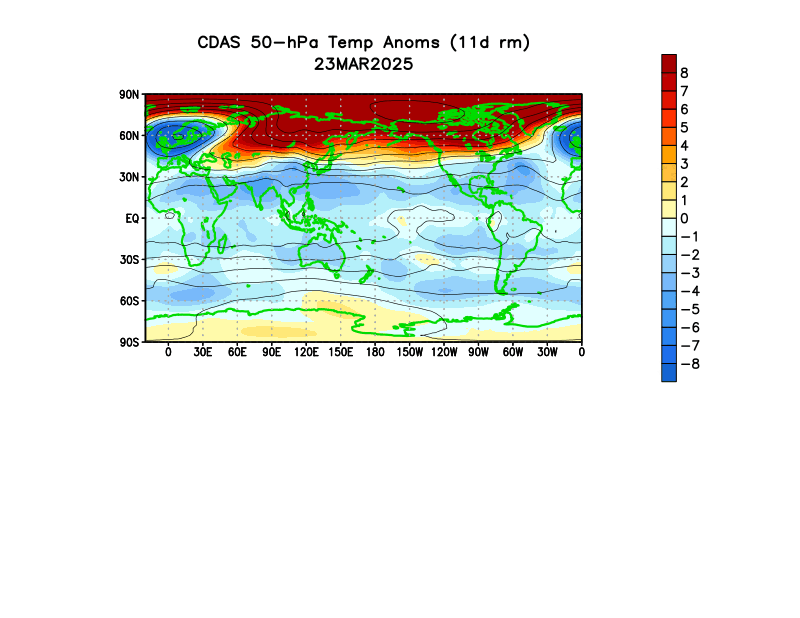Might as well give you all an update on my thinking for the next few weeks on a more informal basis than a Long Range Lookout and the like.
In the near future, I'm seeing the polar vortex get exiled into western Eurasia, a move that will then provoke high pressure to build in the Arctic. Such a situation would most certainly send the stratosphere into quite a phase of turbulence as the Pacific jet stream is tightened. Should the polar vortex try and shift into the North Pacific as long range forecasts indicate, the emergence of a Rex Block is not all that far fetched.
Considering the formation of a Rex Block in the future, the prospects for cold and snow to reach the US would only increase. An already troubled stratosphere, troubled polar vortex and Rex Block would combine to bring the Central and East US a high dosage of cold to the region. The southern storm track would amplify in response to the Rex Block, and the lack of a polar vortex in its domain means higher chances for a negative NAO. All in all, good stuff for the Northeast.
I wish to express that this is indeed a changing pattern, and the models are never good with such a situation. However, I have high confidence that the stratosphere will enter this turbulent phase, meaning the polar vortex is no longer going to be so prone to sticking in its spot. Further displacement of the vortex at different levels in the stratosphere would bring the vortex to its knees. Copious amounts of cold air would be released, and all the sudden winter coats are flying off the shelves in America.
We are seeing our prolonged cold spell in Eurasia leave, in direct response to the departure of warmer stratospheric values over the region. As this warmer stratospheric air departs, temperatures will moderate in those regions. Now, we see the long range having the stratosphere warmth moving into Canada. That does mean that potential for significant cold, as seen in Eurasia, would theoretically be possible. The likelihood of such a cold air mass propagating down to the lower latitudes would be pretty decent, but you're going to want to watch the West Coast for a potential Rex Block. Such a blocking pattern would no doubt pave the way for significant cold to break through into the Central and East US.
Overall, a definite improvement is incoming, regardless of the Rex Block. I can see the stratosphere will cooperate with what I have described above, and if warm air continues to propagate to the stratosphere for more and more time, the odds increase of the polar vortex succumbing to its wounds. That would mean the entire Arctic would be unleashed across the lower latitudes, but that's a whole other post for a whole other time.
In the near future, I'm seeing the polar vortex get exiled into western Eurasia, a move that will then provoke high pressure to build in the Arctic. Such a situation would most certainly send the stratosphere into quite a phase of turbulence as the Pacific jet stream is tightened. Should the polar vortex try and shift into the North Pacific as long range forecasts indicate, the emergence of a Rex Block is not all that far fetched.
Considering the formation of a Rex Block in the future, the prospects for cold and snow to reach the US would only increase. An already troubled stratosphere, troubled polar vortex and Rex Block would combine to bring the Central and East US a high dosage of cold to the region. The southern storm track would amplify in response to the Rex Block, and the lack of a polar vortex in its domain means higher chances for a negative NAO. All in all, good stuff for the Northeast.
I wish to express that this is indeed a changing pattern, and the models are never good with such a situation. However, I have high confidence that the stratosphere will enter this turbulent phase, meaning the polar vortex is no longer going to be so prone to sticking in its spot. Further displacement of the vortex at different levels in the stratosphere would bring the vortex to its knees. Copious amounts of cold air would be released, and all the sudden winter coats are flying off the shelves in America.
We are seeing our prolonged cold spell in Eurasia leave, in direct response to the departure of warmer stratospheric values over the region. As this warmer stratospheric air departs, temperatures will moderate in those regions. Now, we see the long range having the stratosphere warmth moving into Canada. That does mean that potential for significant cold, as seen in Eurasia, would theoretically be possible. The likelihood of such a cold air mass propagating down to the lower latitudes would be pretty decent, but you're going to want to watch the West Coast for a potential Rex Block. Such a blocking pattern would no doubt pave the way for significant cold to break through into the Central and East US.
Overall, a definite improvement is incoming, regardless of the Rex Block. I can see the stratosphere will cooperate with what I have described above, and if warm air continues to propagate to the stratosphere for more and more time, the odds increase of the polar vortex succumbing to its wounds. That would mean the entire Arctic would be unleashed across the lower latitudes, but that's a whole other post for a whole other time.

.gif)












